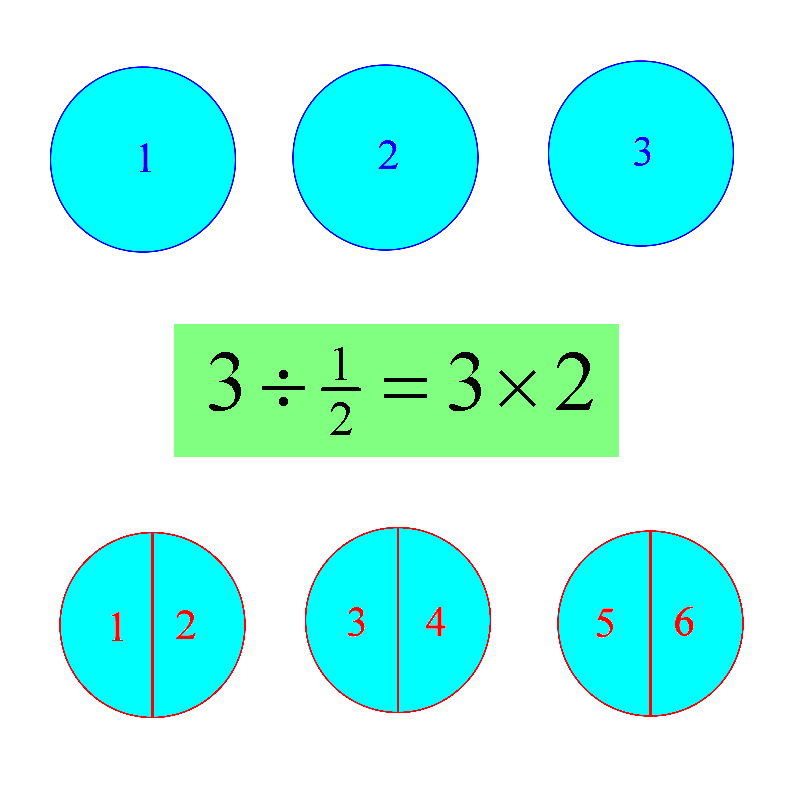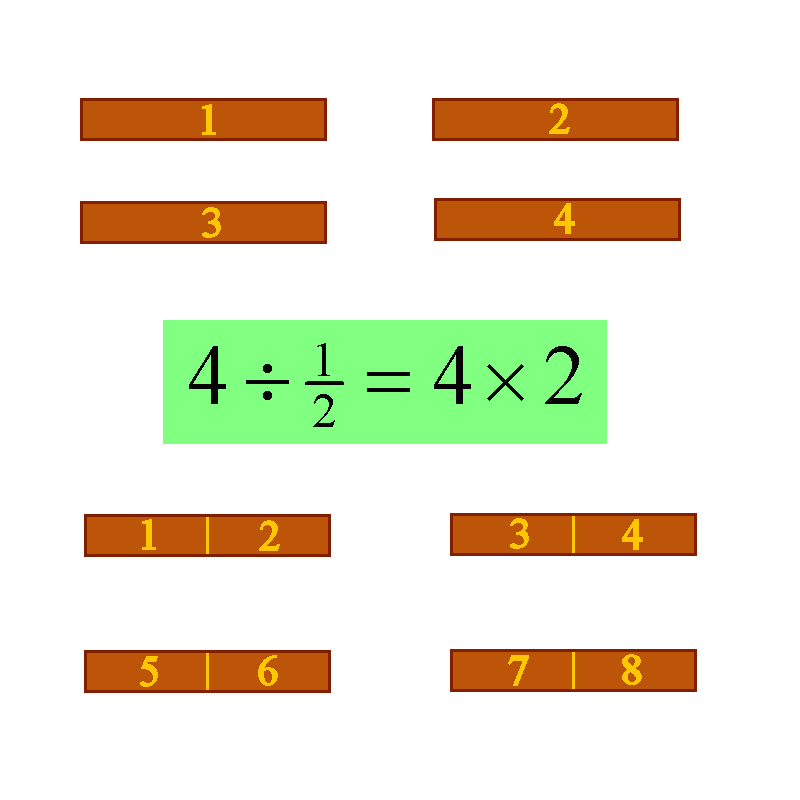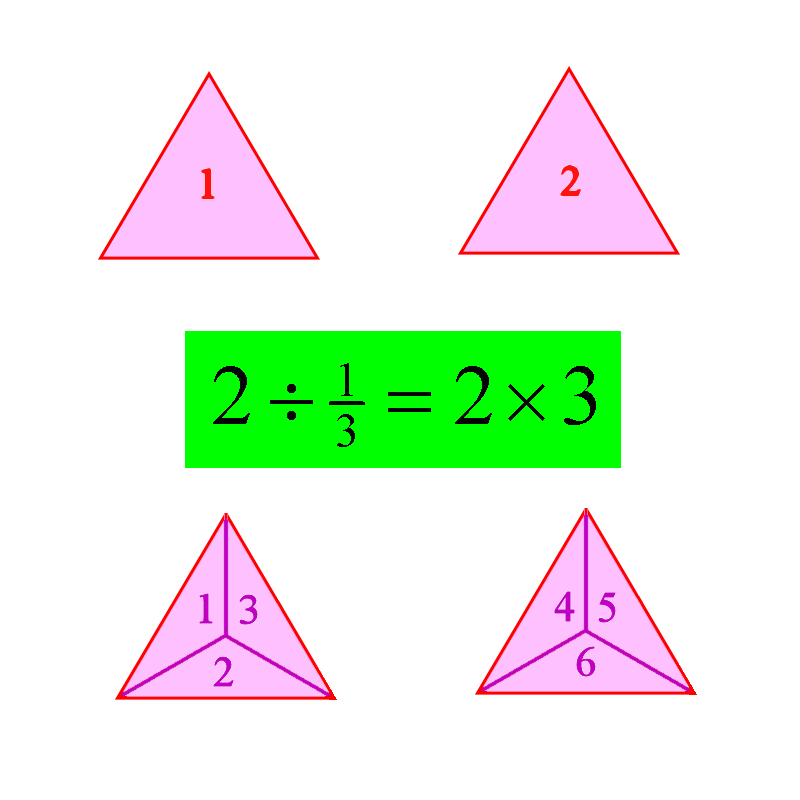Many people have heard the rumor that when you divide by a fraction, you flip the fraction and multiply. Why? That's because their teachers told them so! But why? That's because their teachers' teachers told them so! Yeah, but why? "Oh shut up! Don't ask why! Just invert and multiply!"
Okay! Do not cry till your eyes are dry. I will try to tell you why ... with pictures.
Let's say you have three cakes. And you want to divide into halves. How many halves have you got? Let us cut the cake into two equal pieces each and see.

[ OK, just imagine yummy circular cakes ] Originally, each whole cake was one unit, and we count these units and there are three of them. If we count the halves, there are six of these halves. In other words, half a piece of cake is treated as the new unit. When we come to these new units, we find that thete are six of them. We have twice as many halves as the original cakes. Thus we see that 3 ÷ ½ = 3 × 2 = 6.
The important thing to note is that
every piece of cake gave rise to 2 halves
This is why we multiply by 2. That was a “piece of cake”, right?
Let's try it with chocolate bars. Let's say you have 4 long rectangular chocolate bars. You want to divide by half. What does that mean? You cut each bar into two equal smaller pieces. Each of the smaller pieces is half of a whole bar.

Now you count the number of small pieces. How many small pieces are there? There are eight.
The important thing to note is that
every chocolate bar gave rise to 2 halves
This is why we multiply by 2. Thus 4 ÷ ½ = 4 × 2 = 8. This is easy for everybody to learn, bar none.
Does this work for other shapes and division by other fractions? You have 2 triangles and you want to divide by . So take two triangles, divide each equally into 3 smaller pieces. How many smaller pieces are there?

There are 6 smaller pieces, each of which is a third of the original whole triangle. Note that
every whole triangle gave rise to 3 smaller pieces (thirds)
This is why you multiply by 3. That means
In general,
By the way: why do cells divide? because that's how they multiply!
I hope you find this enlightening!
Announcements
You might also want to read my recent posts:
The Subtlety of Galileo's Paradox of Infinity
Mathematics & Education Digest (10 October 2017)
If you find my articles useful or interesting, please upvote and resteem them! Thanks !
Cheers!!!
@tradersharpe
-- promoting sharp minds
! ! ! ! ! ! ! ! ! ! ! ! ! ! !
If you think you have understood this article, you are welcome to join The Sharp Mathematics Contest #2. Prizes to be given away!!!
! ! ! ! ! ! ! ! ! ! ! ! ! ! !
More hints for the contest: for division by fractions whose numerators are not '1', please read my sequel.
